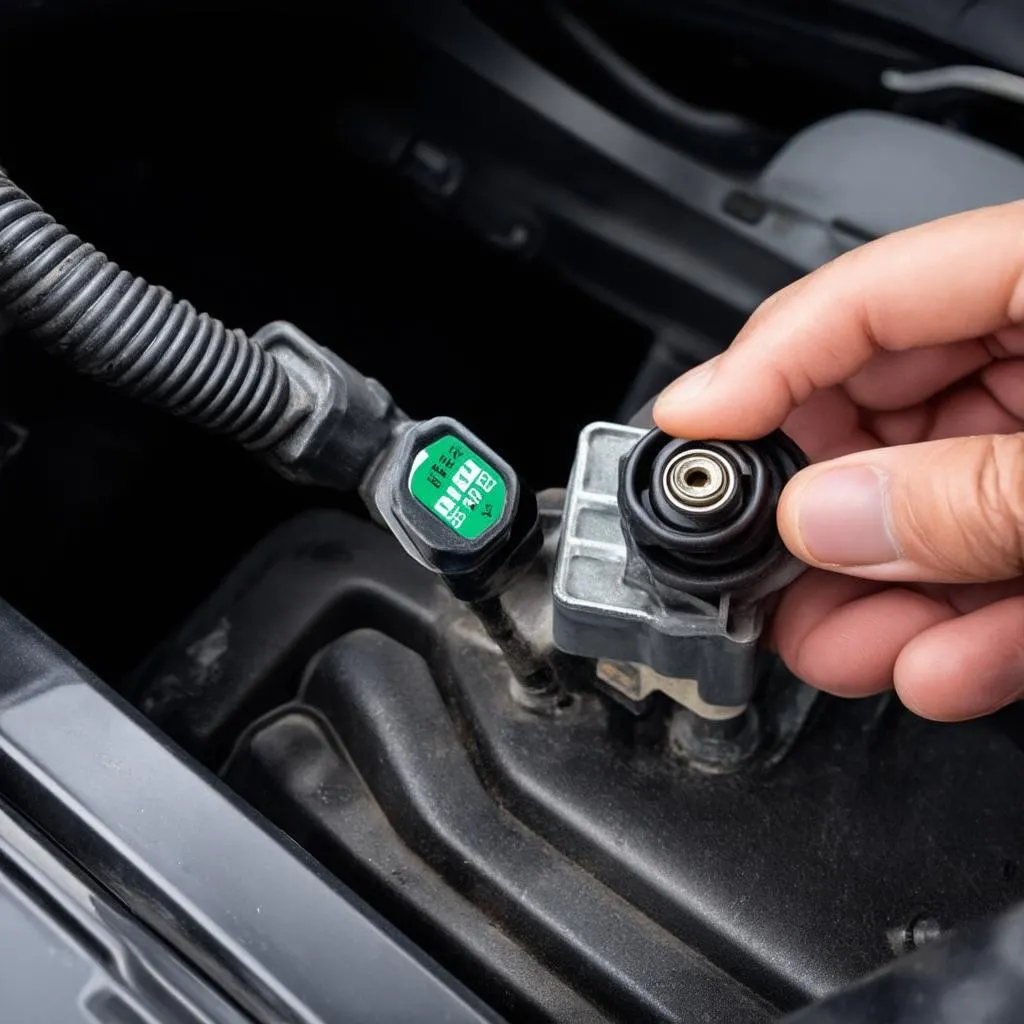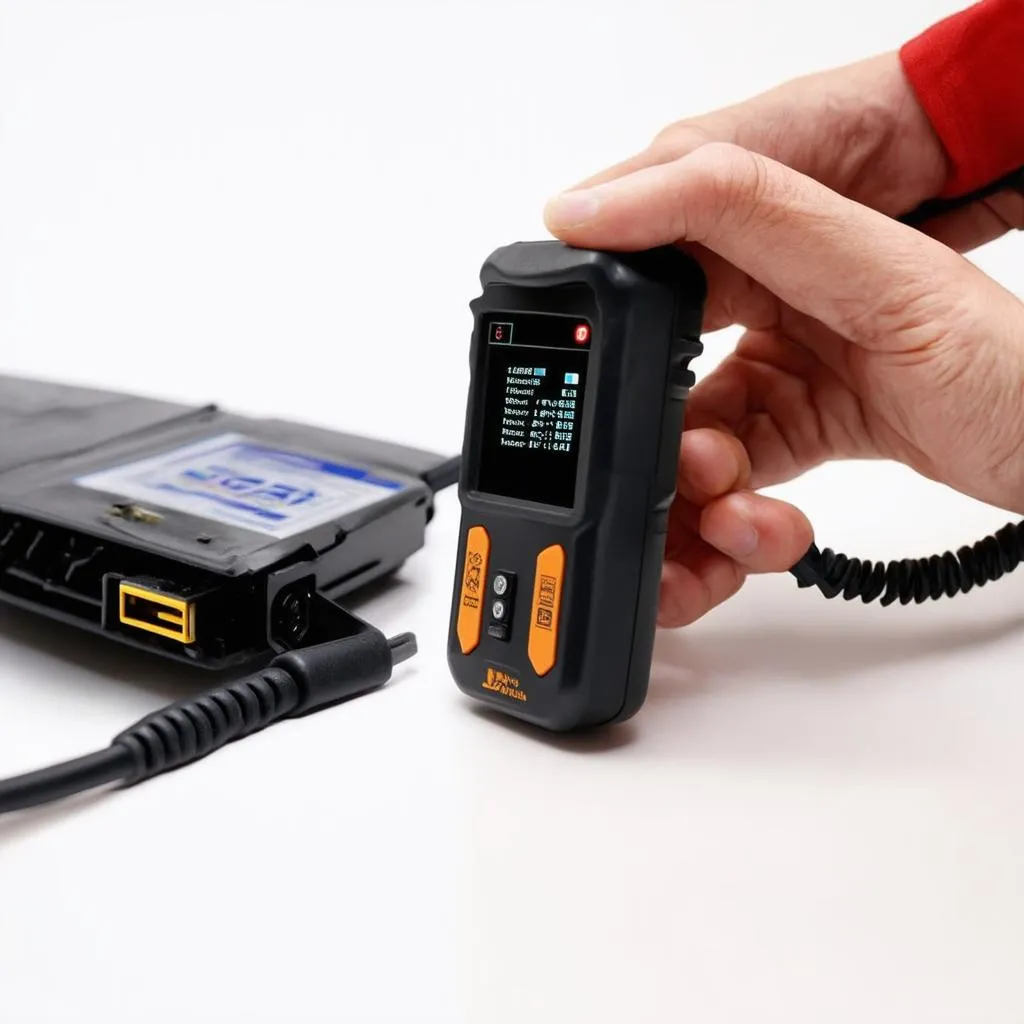Have you ever felt that sinking feeling when your car throws a check engine light? It’s like a cryptic message from your vehicle, leaving you scratching your head and wondering what’s wrong. Today, we’ll delve into one specific error code: Obd P2135, a common issue that can affect European vehicles.
Understanding the Obd P2135 Code
This code, OBD P2135, signifies a “Throttle/Pedal Position Sensor (TP/PPS) “A” Circuit Malfunction”. But what does that actually mean?
A Deeper Dive into the Technicalities
Let’s break it down. The Throttle/Pedal Position Sensor (TP/PPS) is an electronic component responsible for telling the engine control unit (ECU) how much you’re pressing the gas pedal. This information allows the ECU to determine the appropriate amount of fuel and air to send to the engine. In essence, it’s a crucial part of the system that ensures your car runs smoothly.
Think of it like this: Imagine you’re playing a video game where you control a character’s speed with a joystick. If the joystick malfunctions, the character won’t respond to your commands properly. Similarly, a faulty TP/PPS can lead to issues with your car’s throttle response, making it sluggish or erratic.
Potential Causes of Obd P2135
- Faulty TP/PPS Sensor: The most common cause is a defective TP/PPS sensor itself. Over time, these sensors can become worn out, damaged, or contaminated, resulting in inaccurate readings.
- Damaged Wiring: Damaged or corroded wiring connecting the TP/PPS sensor to the ECU can also lead to the P2135 code.
- ECU Issues: In rare cases, the ECU itself may be faulty, causing inaccurate interpretation of the TP/PPS sensor readings.
How to Diagnose and Fix Obd P2135
Now that you understand what OBD P2135 means, let’s explore how to diagnose and fix the issue.
Diagnosing the Problem
- Using a Diagnostic Scanner: The first step is to use an OBD2 scanner compatible with European vehicles. It will retrieve the error code and provide additional information, such as freeze frame data, which can help pinpoint the cause.
- Visual Inspection: Carefully examine the TP/PPS sensor for any visible damage, corrosion, or loose connections. Inspect the wiring for any breaks, cuts, or signs of chafing.
- Voltage Testing: Using a multimeter, measure the voltage output from the TP/PPS sensor at different pedal positions. This will help determine if the sensor is providing accurate readings.
Fixing the Issue
Once the cause of the P2135 code is identified, you can proceed with the necessary repairs.
- Replace the TP/PPS Sensor: If the sensor is faulty, it needs to be replaced. This usually involves removing the old sensor and installing a new one.
- Repair Wiring: Any damaged wiring should be repaired or replaced. This might involve splicing in new wire sections, replacing entire wiring harnesses, or repairing connector terminals.
- ECU Repair or Replacement: If the ECU is faulty, it may need to be repaired or replaced. This is a more complex procedure and should be performed by a qualified mechanic.
Frequently Asked Questions about Obd P2135
Q: What are the symptoms of an OBD P2135 code?
A: Common symptoms include:
- Sluggish acceleration: The car may accelerate slowly or hesitate when you press the gas pedal.
- Erratic throttle response: The car may accelerate suddenly or jerk when you press the gas pedal.
- Engine stalling: The engine may stall at idle or while driving.
- Check engine light: The check engine light will be illuminated.
Q: Is it safe to drive with an OBD P2135 code?
A: It’s not recommended to drive with an OBD P2135 code. The issue can affect your car’s performance and potentially lead to further problems. It’s best to get the code diagnosed and repaired as soon as possible.
Q: How much does it cost to fix an OBD P2135 code?
A: The cost of fixing an OBD P2135 code can vary depending on the cause and the complexity of the repair. Replacing the TP/PPS sensor is typically the most common and affordable solution.
Related Products and Services
For European car owners experiencing OBD P2135, we recommend our services to help diagnose and repair the issue effectively. We offer:
- Dealer Scanner for European Cars: Our professional-grade scanner can access and interpret diagnostic codes for a wide range of European vehicles.
- TP/PPS Sensor Replacement: Our experienced technicians can replace faulty sensors with high-quality OEM parts.
- Wiring Repair and Replacement: We can repair or replace damaged wiring harnesses to restore proper functionality.
Further Reading
For more information about OBD P2135 and other diagnostic codes, we encourage you to explore the following resources:
- [Book Title] by [Author Name] – This book offers an in-depth guide to troubleshooting and repairing automotive electrical systems.
- [Website Name] – This website provides a comprehensive database of automotive diagnostic codes and explanations.
Conclusion
OBD P2135 is a common error code that can affect European vehicles. While it can be frustrating to encounter, understanding the code and its potential causes can help you diagnose and resolve the issue efficiently.
If you’re experiencing this code and need assistance, don’t hesitate to contact us. Our team of experts can help you get your car back on the road quickly and safely.
Note: We strongly advise against self-diagnosis and repair of complex automotive systems. Always consult with a qualified mechanic for accurate diagnosis and repair.
 Throttle Position Sensor
Throttle Position Sensor
 OBD Scanner
OBD Scanner
 European Car
European Car
Whatsapp: +84767531508